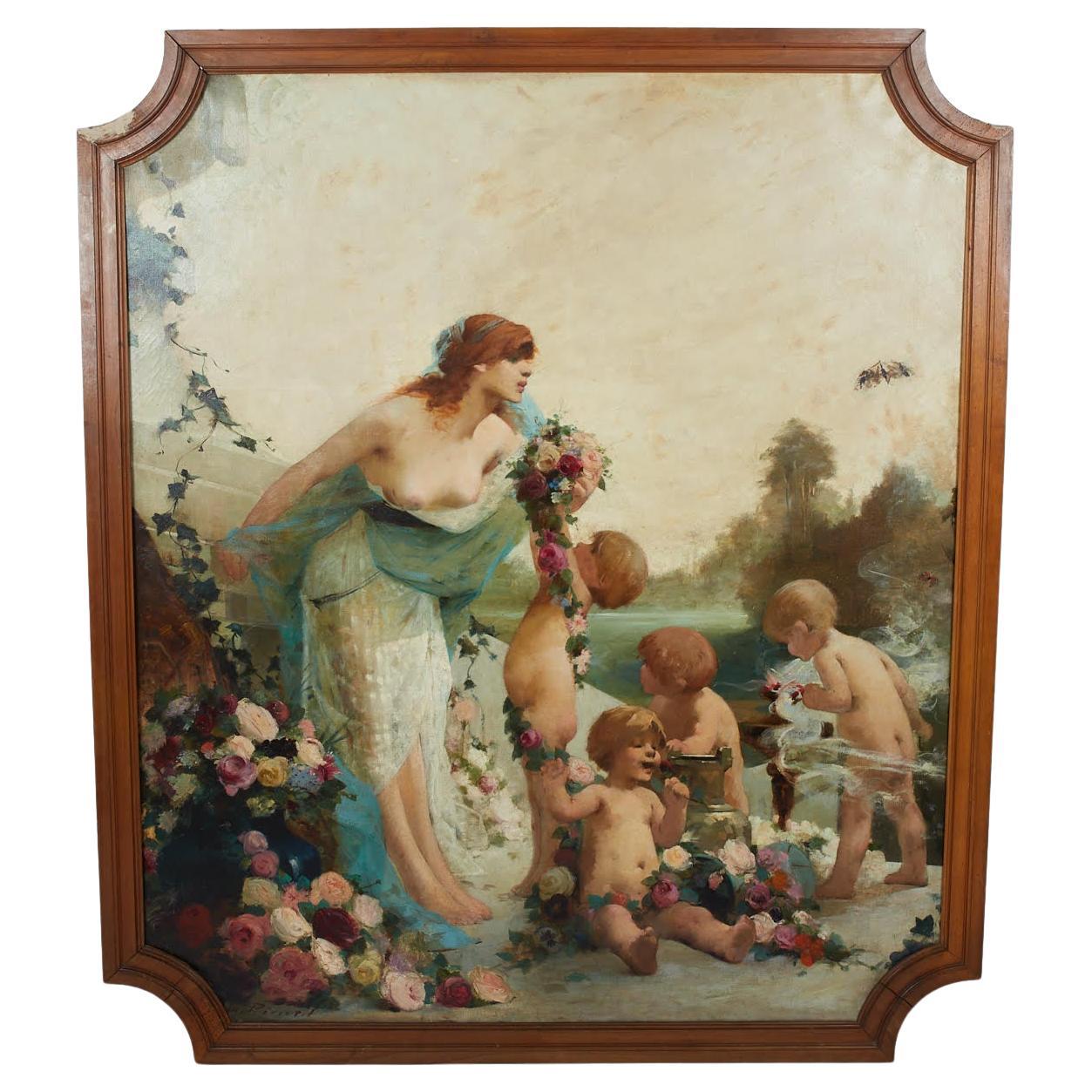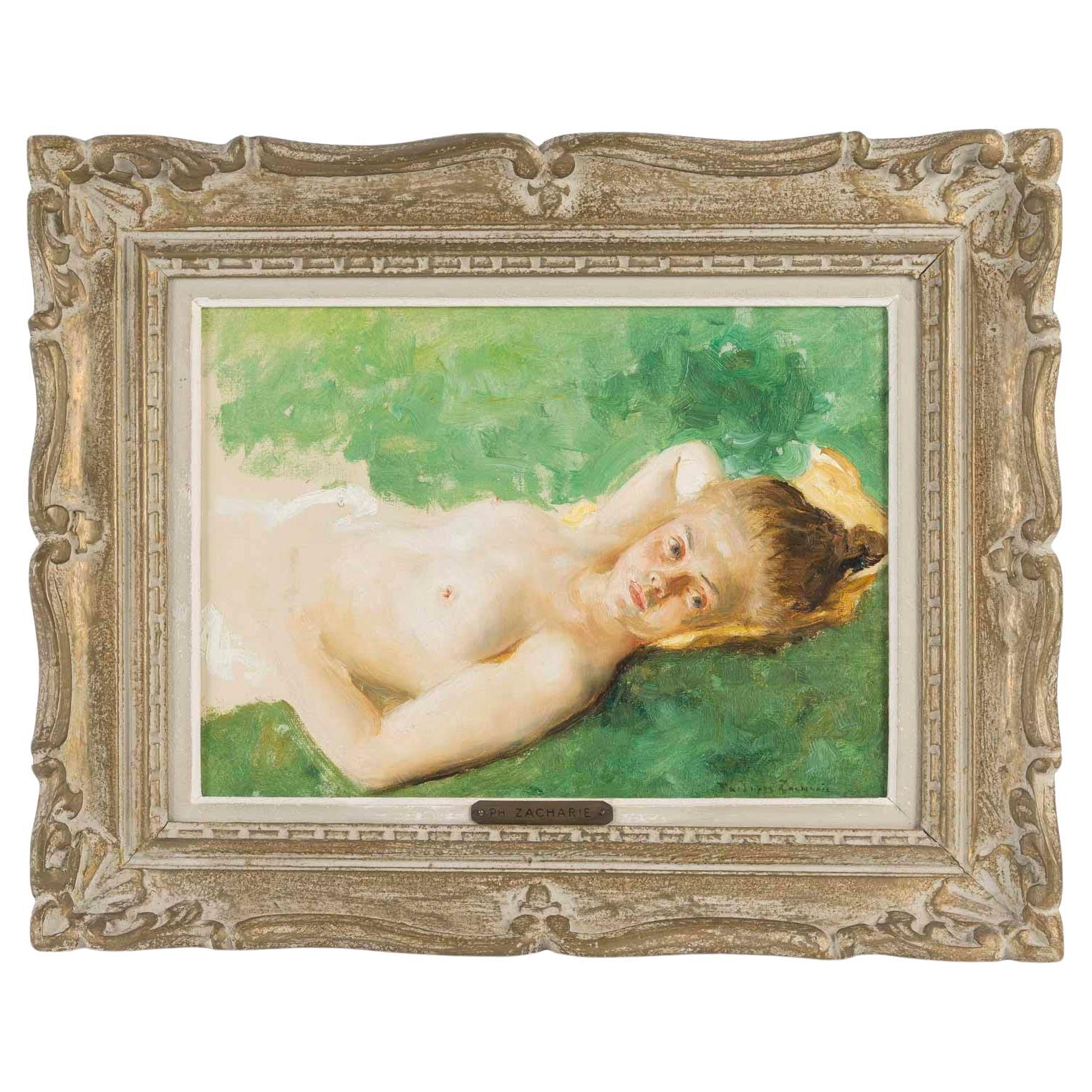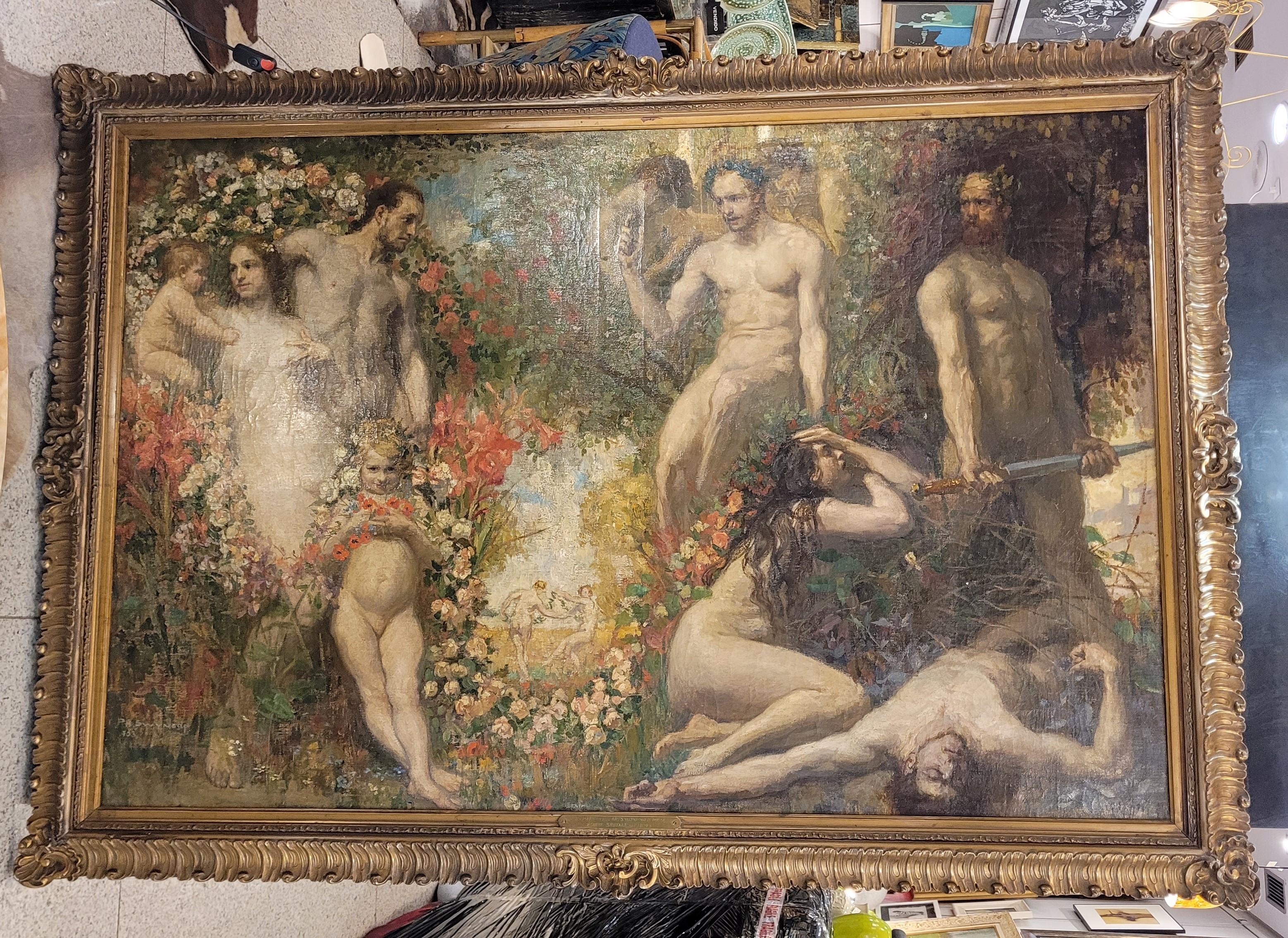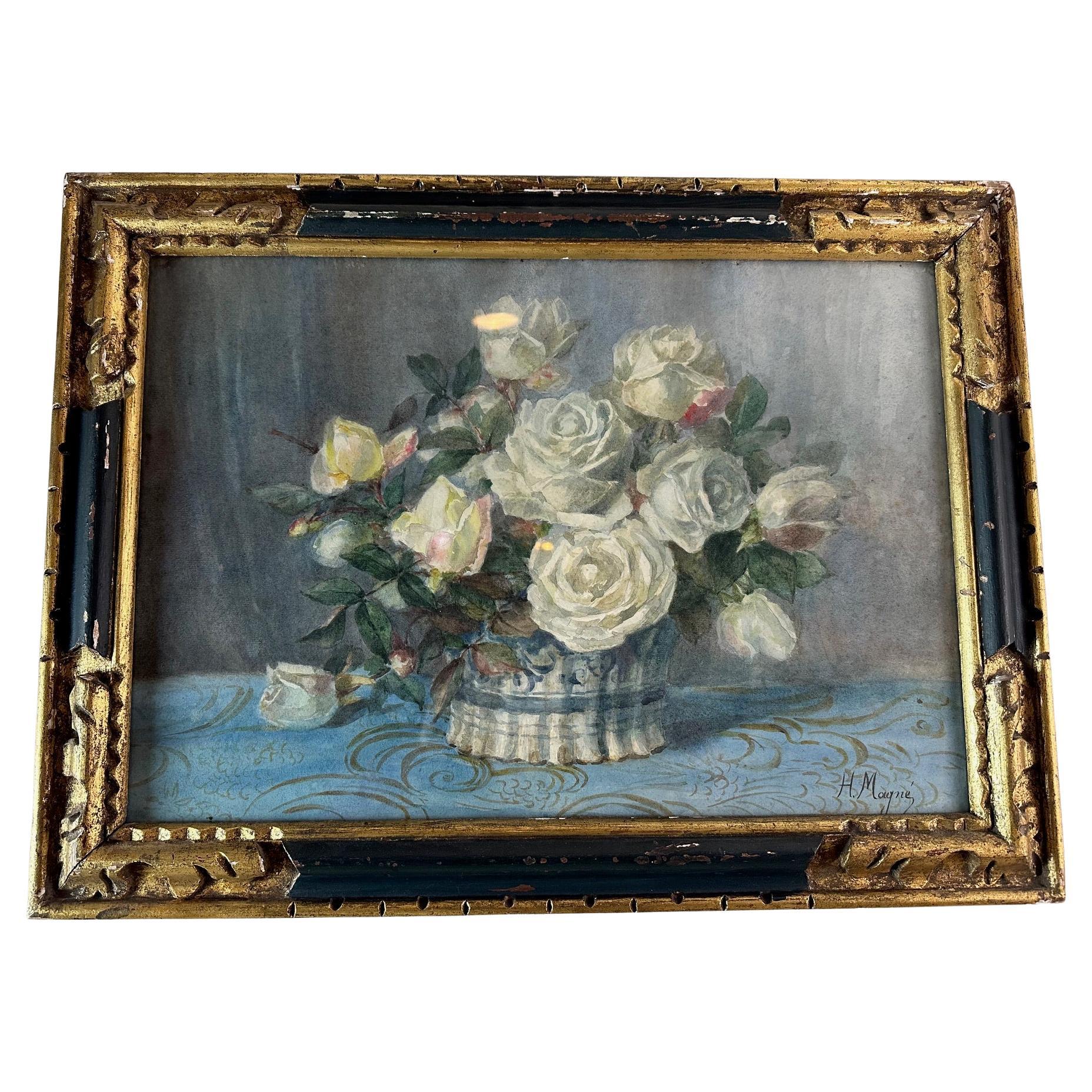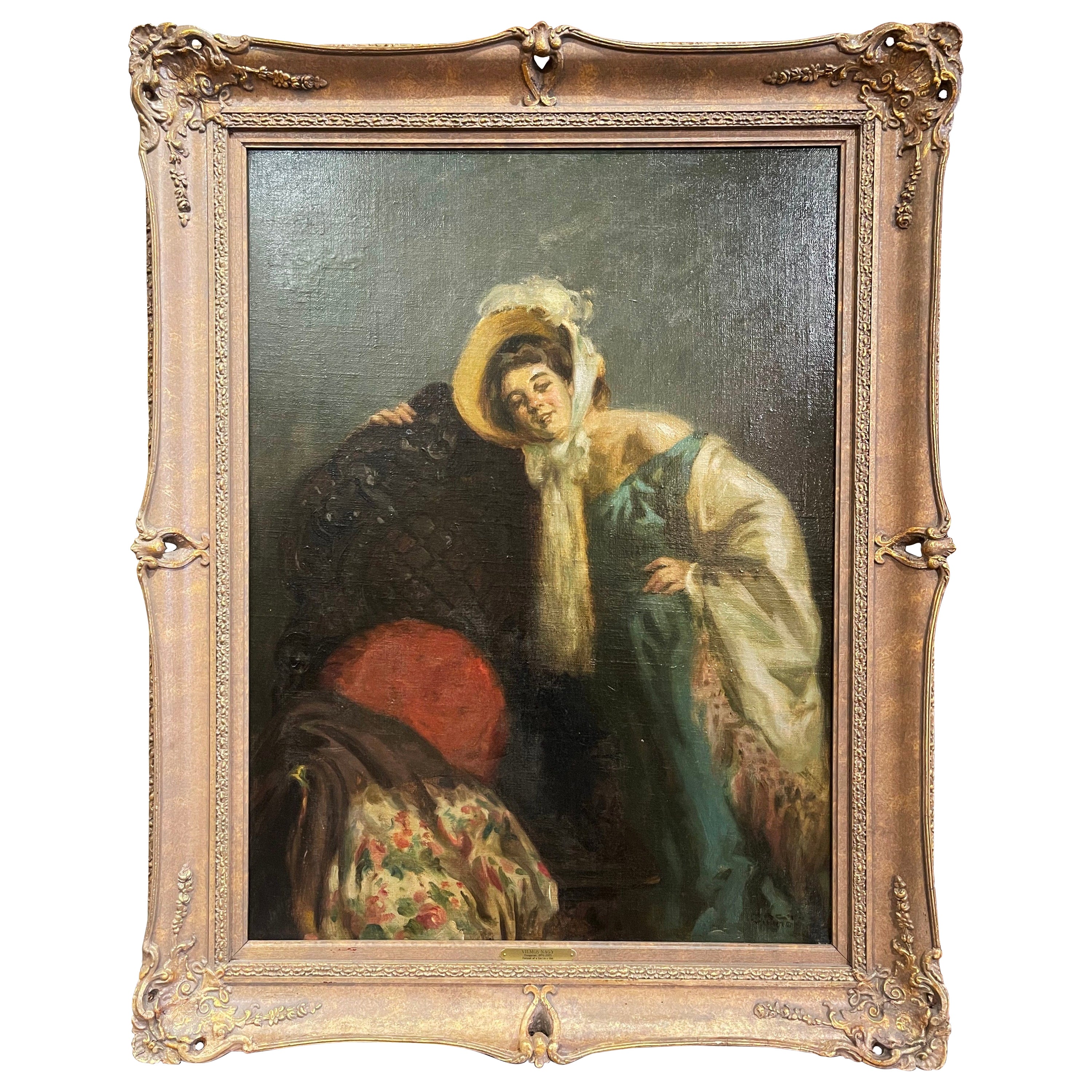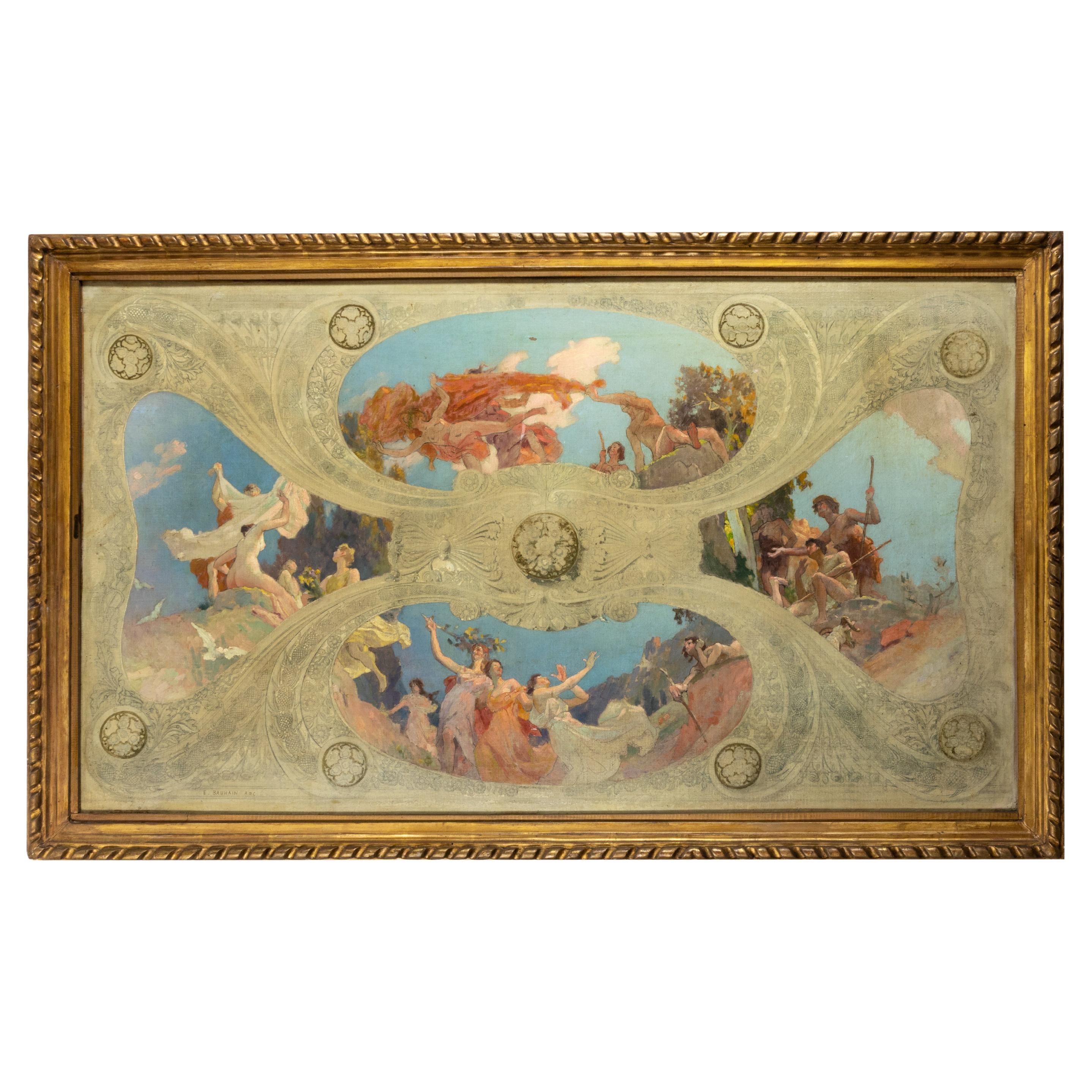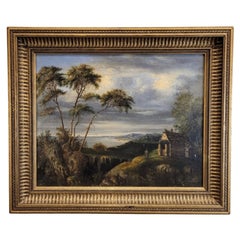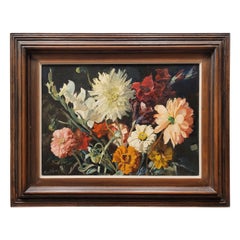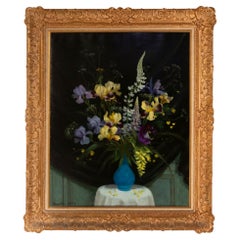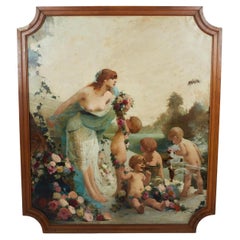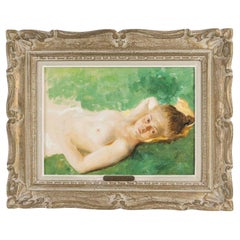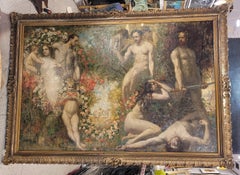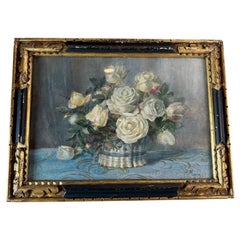Items Similar to Belgian Painting Allegoric signed by P. Swyncop
Video Loading
Want more images or videos?
Request additional images or videos from the seller
1 of 22
Belgian Painting Allegoric signed by P. Swyncop
$10,242.80
$12,803.5020% Off
£7,671.53
£9,589.4120% Off
€8,640
€10,80020% Off
CA$14,377.40
CA$17,971.7620% Off
A$15,727.25
A$19,659.0620% Off
CHF 8,194.10
CHF 10,242.6320% Off
MX$189,234.16
MX$236,542.7020% Off
NOK 103,767.42
NOK 129,709.2720% Off
SEK 97,427.66
SEK 121,784.5820% Off
DKK 65,810
DKK 82,262.5020% Off
About the Item
Ó/L “Peace and the arts are worth more than the brutal glory of weapons”, Philippe Swyncop, 1903 – Belgium, Flemish School
Exquisite oil on canvas signed and dated by Belgian artist Philippe Swyncop (1878 - 1949) in the lower left corner. The plaque at the bottom of the frame reads: “La Paix et les Arts valent mieux que la Gloire brutale des armes”; That is to say, Peace and the arts are worth more than the brutal glory of weapons. The canvas represents, therefore, an allegory about the triumph of peace and the arts in the face of the brutal consequences of war.
On the right side, standing, a man representing War, immersed in shadows and holding the sword with which he has just killed a young man, whose body appears lying on the ground in a violent foreshortening, whose head seems to pierce the limits of the canvas. Next to her, a woman cries inconsolably for the loss, representing the devastation and horrors caused by the war.
And in the face of war, the arts. On the left side the vegetation becomes lush. The color accompanies the meaning of the work. All the meaning seems contained in the infant, the only figure that looks directly at the viewer and appears smiling.
In this work the characteristics of Flemish painting can be seen. This school had its origin in the 15th century, and assumed a fundamental role in the History of European Art during the 15th, 16th and 17th centuries, although its influence continued during subsequent centuries. During the Baroque period, Rubens was the most influential author and the one who best expressed the tendencies of this movement. Rubens' work is marked by his time in Italy, where he dedicated himself to the study of classical antiquity and the Italian Renaissance, especially attracted by the Venetian school and by authors such as Caravaggio and Annibale Carracci, from whom he took his sensitivity and sense of beauty compatible with the energetic expression of feelings. Due to the influence of Flemish painting, the figures appear round and voluminous, with a very precise anatomical study. The complexity of the composition also stands out, with numerous figures and a complicated arrangement. The importance of color in relation to drawing cannot be ignored either, to which is added the loose and vaporous brushstroke, still reminiscent of Rubens' study and assimilation of the characteristics of the Venetian school, along with the decorative sense.
In the center of the composition, the vegetation opens to give way to an open field where, in a distant plane, there is a couple dancing. The triumph of life. It is also the memory of the literary figure “hortus conclusus”, which appears for the first time in the biblical story of the Song of Songs, evoking Eden, the idyllic, closed garden, created by God for man and from which he was expelled. It was precisely the desire to recover this lost paradise that drove the poetic character of this figure and what made it last over time, from the first medieval representations (based on Christian interpretation) to the various artistic trends of the 20th century.
Philippe Swyncop was a painter, draftsman and illustrator of Belgian origin. He trained at the Brussels Academy, although he never stopped traveling, which caused his personal style to be formed by the sum of multiple influences. In his works there are continuous references to Renaissance art and the nudes of the great masters of painting, demonstrating his classical and academic training. He is especially recognized for his portraits, so this great work stands out within his production, given its large dimensions and its theme. It is a mix between the modernism typical of the time in which he lived and his deep desire to evoke a refined, idealized classicism, of overflowing beauty, thus trying to link himself with the great masters of previous times.
Dimensions: 118 x 170 x 5 cm. / 100 x 150 cm.
- Creator:Philip Swyncop (Author)
- Dimensions:Height: 46.46 in (118 cm)Width: 66.93 in (170 cm)Depth: 1.97 in (5 cm)
- Style:Art Nouveau (Of the Period)
- Materials and Techniques:
- Place of Origin:
- Period:1900-1909
- Date of Manufacture:1903
- Condition:Wear consistent with age and use.
- Seller Location:Valladolid, ES
- Reference Number:1stDibs: LU2943339106462
About the Seller
4.7
Gold Seller
Premium sellers maintaining a 4.3+ rating and 24-hour response times
Established in 1990
1stDibs seller since 2017
162 sales on 1stDibs
Typical response time: <1 hour
- ShippingRetrieving quote...Shipping from: VALLADOLID, Spain
- Return Policy
Authenticity Guarantee
In the unlikely event there’s an issue with an item’s authenticity, contact us within 1 year for a full refund. DetailsMoney-Back Guarantee
If your item is not as described, is damaged in transit, or does not arrive, contact us within 7 days for a full refund. Details24-Hour Cancellation
You have a 24-hour grace period in which to reconsider your purchase, with no questions asked.Vetted Professional Sellers
Our world-class sellers must adhere to strict standards for service and quality, maintaining the integrity of our listings.Price-Match Guarantee
If you find that a seller listed the same item for a lower price elsewhere, we’ll match it.Trusted Global Delivery
Our best-in-class carrier network provides specialized shipping options worldwide, including custom delivery.More From This Seller
View AllFrance Oil on panel “Marina”, French School
By French House & Garden
Located in Valladolid, ES
Exceptional painting depicting a Mediterranean seascape. The two fishing boats in the center of the composition stand out. In the far distance, a village with a small harbor, charact...
Category
Antique Early 1900s French Beaux Arts Paintings
Materials
Wood, Giltwood, Paint
Dutch School Military Painting off the Coast Landscape Dutch Netherlands
By The Dutch Touch Painting Inc.
Located in Valladolid, ES
Amazing landscape painting, characteristic of the 19th-century Dutch school. Titled “Military off the Coast,” although the focus is on the landscape itself, there is a small human fi...
Category
Antique 1880s Dutch Romantic Paintings
Materials
Canvas, Wood, Paint
French Painting "Dahlias and Camellias" Paul Bazé, midcentury France
By Paul Robert Brock
Located in Valladolid, ES
Impressive and very beautiful oil on panel made by Paul Robert Bazé, an artist of French origin. It represents a still life with a bouquet of flowers in the foreground on a dark background. It mainly shows dahlias and camellias, which give the work its name. The traditional still life genre shows its evolution here. It presents the characteristic style of the genre to which it corresponds, realistic and meticulous, especially noticeable in the way it works with the different qualities of the flowers and leaves. The dark background is also inherited from the still life genre, with a marked dark interest reflected in the dark backgrounds. Signed in the lower left corner.
Paul Robert Bazé (1901-1985) was born in Paris, although he soon moved to Bayonne and then to Bordeaux, where he was a student of Paul Quinsac...
Category
Vintage 1950s French Mid-Century Modern Paintings
Materials
Wood, Paint
$1,773 Sale Price
46% Off
French Oil on Canvas Yellow blue Still llife ROGER CHAPELAIN-MIDY signed
By Roger Chapelet
Located in Valladolid, ES
One of a kind painting by ROGER CHAPELAIN-MIDY (Paris, 1904-1992).
"Still life" , Oil on canvas. Signed in the lower left corner.
Size: 97 x 76 cm; 122 x 105 cm (framed)
R. Chapelai...
Category
Vintage 1940s French Beaux Arts Paintings
Materials
Canvas, Giltwood, Paint
Oil on canvas English Romanticism Landscape with Tiger
By English School
Located in Valladolid, ES
One of a kind large-format English Romantic landscape. This is a very powerful work, with a melancholic and contemplative character, in which nature takes center stage, characteristi...
Category
Antique 1880s English Romantic Paintings
Materials
Canvas, Giltwood, Paint
French Couple Watercolor Engravings “Le duc de Joyeuse” and “Le pere Joseph”
By French House & Garden
Located in Valladolid, ES
Pair of beautiful watercolor engravings “Le duc de Joyeuse” and “Le pere Joseph” made in 19th century France, with an extraordinary carved wooden frame. These elegant carved and gil...
Category
Antique 1840s French Louis Philippe Paintings
Materials
Giltwood, Paint, Paper
$2,266 Sale Price / set
20% Off
You May Also Like
Oil on Canvas, Painting by Georges Picard, Spring, Art Nouveau Period.
By Georges Picard
Located in Saint-Ouen, FR
Oil on canvas, painting by Georges Picard, spring, early 20th century, Art Nouveau period.
Painting, oil on canvas by Georges Picard representing an interpretation of spring, early ...
Category
Early 20th Century French Art Nouveau Drawings
Materials
Canvas
Oil on Canvas, Painting by Philippe Zacharie (1849-1915).
Located in Saint-Ouen, FR
Oil on canvas, painting by Philippe Zacharie (1849-1915).
Painting, oil on canvas representing a nude study, woman lying in the grass by Philippe Zacharie (1849-1915).
Painting: H: ...
Category
Antique 19th Century French Art Nouveau Paintings
Materials
Wood, Paper
Flemish School Oil on Canvas Allegory of Peace and the Arts Philippe Swyncop
Located in Valladolid, ES
One of a kind and very important oil on canvas signed and dated by the Belgian artist Philippe Swyncop (1878 – 1949) in the lower left corner. The plaque at the bottom of the frame r...
Category
Early 1900s Art Nouveau Nude Paintings
Materials
Canvas
Early 20th century French Watercolor Painting Signed H.Magné, 1925s
Located in LEGNY, FR
Very pretty watercolor painting representing a bouquet of flowers in a faience vase signed lower right H.Magné. Date of the 1925s.
Very well framed and under glass by the J.Pouillé ...
Category
Vintage 1920s French Art Nouveau Paintings
Materials
Glass, Wood, Paper
Early 20th Century Hungarian Portrait of a Girl in a Hat Signed Vilmos Nagy
Located in Dallas, TX
Decorate a lady’s office, study, or bedroom with this elegant antique oil on canvas painting. Created in Hungary circa 1920 and set in its original carved giltwood frame, the composition titled “Portrait of a Girl in a Hat...
Category
Early 20th Century Hungarian Art Nouveau Paintings
Materials
Canvas, Giltwood
Art Nouveau Oil Painting, Church Study, 20th Century, Edouard Bauhain
By Edouard Bauhain
Located in Lisbon, PT
An intriguing 20th-century work, a study for a church fresco ceiling, showcases the artistic genius of Bauhain, a pivotal figure bridging Art Nouveau and Art Deco styles. The piece ...
Category
20th Century French Art Nouveau Paintings
Materials
Canvas
$3,793 Sale Price
30% Off
